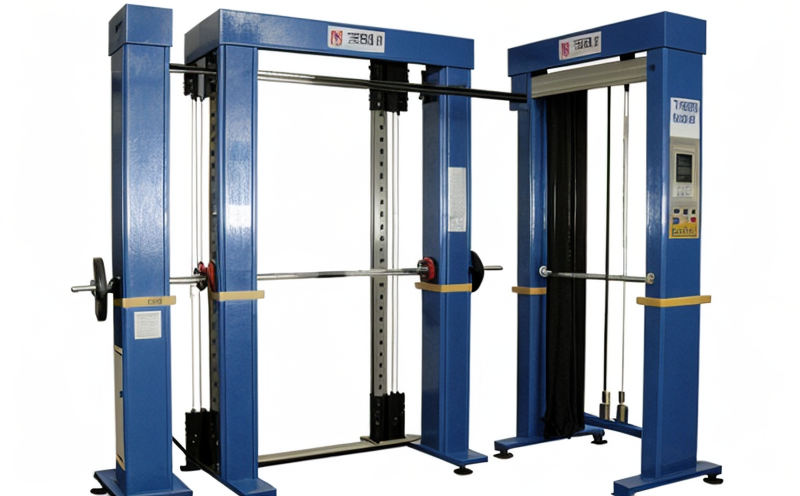ASTM D2261 Tearing strength of fabrics Tongue tear method
The ASTM D2261 test, also known as the Tongue Tear Method, is a standard practice for determining the tearing strength of woven fabrics. This testing procedure evaluates the resistance of fabric to longitudinal tearing along a tongue-shaped specimen. The method involves clamping one end of the fabric sample into a tensile testing machine while subjecting it to controlled stretching until failure occurs. This information is crucial in ensuring that fabrics used in various industries meet safety and performance standards.
The Tongue Tear Method has broad applications, especially within the textile sector where quality assurance is paramount. Weave sectors such as automotive, footwear, and apparel rely heavily on this test for compliance with international standards like ISO 13934-2 and EN ISO 20627. By understanding how fabrics behave under stress during tearing, manufacturers can optimize their materials to enhance durability and safety.
The methodology typically involves preparing specimens according to ASTM D2261 specifications. Specimens are cut from the fabric with a specific geometry designed to simulate real-world conditions as closely as possible. Once prepared, these samples undergo testing using specialized equipment capable of precise control over loading rate and displacement. The test results provide valuable insights into potential weaknesses in textile design or manufacturing processes.
For accurate interpretation of results, it's important to consider not only the raw numerical values but also factors like environmental conditions during testing. Temperature fluctuations can significantly impact fabric performance, making controlled environments essential for reliable data collection.
In addition to its role in quality control, this test plays a critical part in research and development activities aimed at improving product designs or developing new materials. By identifying areas where fabrics fail, researchers can make informed decisions about material composition, structure, and finishing techniques. Furthermore, manufacturers benefit from having access to comprehensive tear strength data when selecting appropriate fabrics for specific applications.
Understanding the principles behind ASTM D2261 helps ensure consistent application across different laboratories worldwide. Compliance with this standard ensures comparability of results between facilities and fosters trust among stakeholders involved in textile production processes.
Scope and Methodology
The scope of the ASTM D2261 test focuses specifically on measuring the tearing strength of woven fabrics using a tongue-shaped specimen. According to ASTM guidelines, this involves clamping one end of the fabric into a tensile testing machine while applying controlled stretching until failure occurs.
The procedure begins with preparing specimens that follow strict dimensions outlined in ASTM D2261. These samples are then placed within a specially designed fixture which holds them securely during the test run. The specimen is subjected to increasing loads at a constant rate, allowing for observation of how it behaves under stress until ultimate failure.
During testing, precise measurements are taken including peak load experienced before rupture and elongation observed throughout loading cycle. Data collected serves as basis for calculating tearing strength which can be expressed either in terms newtons per meter (N/m) or pounds per inch (psi).
- Why Choose This Test:
- To ensure compliance with international standards like ISO 13934-2 and EN ISO 20627.
- To identify potential weaknesses in textile design or manufacturing processes.
- To enhance durability and safety of products made from woven fabrics.
These measurements provide critical information that helps manufacturers make informed decisions regarding material selection, processing methods, and final product performance. Understanding these parameters allows for continuous improvement in fabric quality across various industries.
Eurolab Advantages
At Eurolab, we pride ourselves on offering top-tier textile testing services that meet the highest industry standards. Our state-of-the-art facilities and experienced staff provide unparalleled accuracy and reliability in every test conducted.
- Expertise and Experience: With years of experience in the field, our team understands what it takes to deliver exceptional results consistently.
- Comprehensive Services: We offer a wide range of textile testing services beyond just ASTM D2261 including dye fastness tests, colorfastness assessments, and shrinkage percentage determinations among others.
- Accurate Results: Our advanced instrumentation guarantees precise measurements every time ensuring confidence in your final product quality.
- Compliance Assurance: By adhering strictly to internationally recognized standards such as ISO 13934-2 and EN ISO 20627, we ensure that all our tests are compliant with relevant regulations.
- Fast Turnaround Times: Efficiency is key at Eurolab; we strive to provide quick turnaround times without compromising on quality or accuracy.
- Client Satisfaction: Our commitment to excellence means client satisfaction is always top priority. We aim to exceed expectations by providing excellent service every step of the way.
- Global Reach: With operations across multiple countries, Eurolab offers clients seamless access regardless of location.
Choose Eurolab for all your textile testing needs and experience world-class service tailored specifically to meet your requirements.
Why Choose This Test
- Avoiding Liability Risks: Ensuring that fabrics used in products comply with relevant standards helps protect against legal action due to product failures or injuries caused by poor quality materials.
- Enhanced Reputation: Demonstrating commitment to high-quality production processes through rigorous testing can significantly enhance a company’s reputation among customers and partners alike.
- Competitive Advantage: Understanding the tearing strength characteristics of your fabrics gives you an edge over competitors who may not prioritize such aspects in their product development cycles.
- Informed Decision Making: Having reliable data about how your fabrics perform under stress allows for better decision-making regarding material choices and process improvements.
- Customer Confidence: Providing transparent information about the durability of materials used in products builds trust with customers who value quality assurance above all else.
- Regulatory Compliance: Meeting regulatory requirements is essential for maintaining business operations legally. This test helps ensure that products meet necessary standards set by governing bodies worldwide.
In summary, choosing the ASTM D2261 Tongue Tear Method ensures comprehensive evaluation of fabric performance under specified conditions, thereby promoting safety and quality assurance across various industries.





